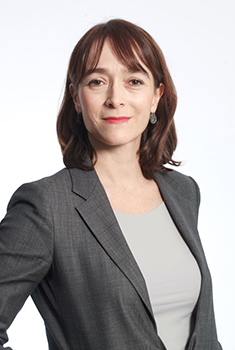
After more than 40 years of operation, DTVE is closing its doors and our website will no longer be updated daily. Thank you for all of your support.
France Télévisions chief outlines plan for French alternative to Netflix
France Télévisions hopes to move forward with plans to create a new SVOD platform to distribute French content and offer a counterweight in France to the likes of Netflix and Amazon by autumn next year, according to France Télévisions director-general Delphine Ernotte-Cunci.
Addressing a French parliamentary hearing, Ernotte-Cunci said that it was crucially important to create an SVOD platform to ensure the future of French – and European – content creation. She said the field could not be left to US platforms such as Netflix and Amazon that could create content once and distribute it globally.
“There is an absolute need to create an on-demand platform” that could compete with US platforms, she said.
Ernotte-Cunci said that France Télévisions administrative council would discuss the SVOD plan in mid-December, with a business plan to be presented in February. “We have to proceed quickly,” she said.
She said there are two conditions. The first was that such a platform would promote French content first of all.
The second condition is that the platform will have to be financially self supporting as it was not acceptable to use licence fee funding to support it.
At the same time France Televisions’ existing catch-up platform Pluzz would have to be revamped, providing free access to recently aired content, she said. The service would be revamped in the spring to provide access to all of France Télévisions’ content, both free-to-view and then as part of the new offering.
Ernotte-Cunci said that if all went well, the new SVOD platform could be launched in the autumn of next year.
In her presentation to deputies, Ernotte-Cunci said France Télévisions was committed to increase the volume of creation. She said that currently all TV channels in France – public and private – produced about 650 hours of original content a year, compared with 2,000 from German channels.
Ernotte-Cunci also made an impassioned defence of public service media, She said that retaining public broadcast was vital for democracy, and said that the vast majority of French people viewed France Télévisions content regularly.
She said that France Télévisions had to cope with making serious economies at the same time as it adjusted to the radical changes in media consumption brought about by digital technology.
She said that broadcaster was capable of making the necessary changes and cited the example of the launch of news service France Info. She said that the launch of this channel “in 10 months” was “an incredible challenge” that demonstrated the commitment of the pubcaster’s staff to their mission.
She also said that the pubcaster’s new accord with producers would see the proportion of programmes created through a co-production model rise from 5-25%, helping to protect the future of the broadcaster’s channels.
Ernotte-Cunci also said that the ongoing reform of France 3 was “complicated”. Giving the channel a regional dimension was challenging, involving a reorganisation to serve 13 regions and the localisation of programming creation and acquisition. She said some regions could double their output while others would struggle.



